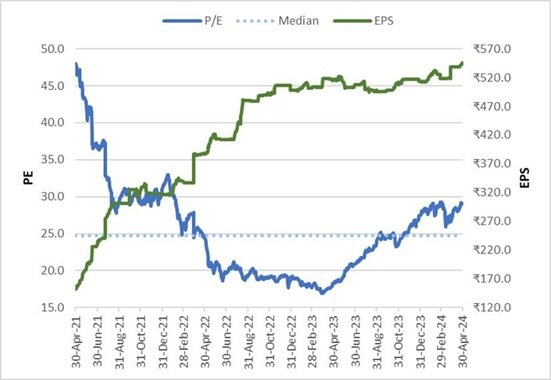Investing in the stock market requires more than just intuition—it calls for a solid understanding of the different types of indices that track market performance. Two significant indices that investors often refer to are the Nifty Small Cap Index and the BSE LargeCap Index. These indices represent two very different segments of the market, each with its own set of opportunities and risks.
In this blog post, we’ll explore what these indices are, how they differ, and how you can use them to make informed investment decisions.
What is a Stock Market Index?
A stock market index is a statistical measure that shows changes occurring in the stock market. It is made up of a group of stocks representing a particular sector, market segment, or the entire market. Indices like the Nifty Small Cap Index and the BSE LargeCap Index help investors understand market trends and compare the performance of individual stocks.
Introduction to the Nifty Small Cap Index
The Nifty Small Cap Index represents the performance of small-cap companies listed on the National Stock Exchange (NSE). These are generally companies ranked from 251st onward in terms of market capitalization.
Key Features:
- Includes 100 small-cap companies.
- Reflects growth potential and innovation.
- High risk, high return potential.
Why It Matters:
Small-cap companies are often under-researched, meaning they can offer early investment opportunities for higher returns. However, they are also more volatile and may not have the same financial stability as large-cap firms.
Introduction to the BSE LargeCap Index
The BSE LargeCap Index, on the other hand, includes large, established companies listed on the Bombay Stock Exchange (BSE). These firms typically rank among the top in terms of market capitalization and are considered market leaders in their respective sectors.
Key Features:
- Represents financially strong and stable companies.
- Lower volatility compared to small-cap stocks.
- Ideal for conservative, long-term investors.
Why It Matters:
The BSE LargeCap Index serves as a benchmark for mutual funds and institutional investors, offering a more secure way to participate in equity markets.
Nifty Small Cap Index vs. BSE LargeCap Index: Key Differences
| Factor | Nifty Small Cap Index | BSE LargeCap Index |
| Market Cap | Small-cap | Large-cap |
| Risk | High | Low to Moderate |
| Return Potential | High | Moderate |
| Volatility | High | Low |
| Liquidity | Low to Medium | High |
Risk vs. Reward:
While the Nifty Small Cap Index may offer explosive growth during bull markets, it also tends to decline faster during market downturns. The BSE LargeCap Index, meanwhile, offers stability and consistent, if modest, returns.
Investment Strategies Based on These Indices
1. Diversification Strategy
Investing in both indices allows you to spread your risk across different segments of the market. A mix of small-cap and large-cap investments can balance potential returns and risk.
2. Market Cycle Timing
Small caps usually outperform during bull markets, while large caps tend to perform better in volatile or bearish conditions. Tracking these indices helps in timing entry and exit points.
3. SIP in Index Funds
Systematic Investment Plans (SIPs) in mutual funds or ETFs tracking these indices can be a good way to build wealth steadily over time.
How to Track These Indices
You can track the Nifty Small Cap Index and the BSE LargeCap Index through:
- Official exchange websites (NSE and BSE)
- Financial news portals (Moneycontrol, Economic Times, etc.)
- Stock market apps (Groww, Zerodha, Upstox)
Make sure to monitor daily movements, historical performance, and news related to top constituents.
Pros and Cons
Nifty Small Cap Index
Pros:
- High growth potential
- Early investment opportunities
- Ideal for aggressive investors
Cons:
- Higher volatility
- Lower liquidity
- Greater susceptibility to market downturns
BSE LargeCap Index
Pros:
- Financially strong companies
- Reliable performance
- Safer during downturns
Cons:
- Slower growth
- Less scope for explosive returns
Real-World Examples of Stocks
In the Nifty Small Cap Index:
- Brightcom Group
- Tanla Platforms
- Zensar Technologies
These companies have shown rapid growth and high market interest but also face regular price fluctuations.
In the BSE LargeCap Index:
- Reliance Industries
- HDFC Bank
- Infosys
These firms are household names, known for financial stability, global presence, and consistent dividend payouts.
What Type of Investor Should Choose Which Index?
Choose the Nifty Small Cap Index if:
- You have a higher risk appetite.
- You’re investing for long-term growth.
- You want to capitalize on emerging companies.
Choose the BSE LargeCap Index if:
- You prefer safer, stable investments.
- You’re close to financial goals and can’t take high risks.
- You seek dividend-paying, blue-chip stocks.
Conclusion: Which One is Right for You?
Both the Nifty Small Cap Index and the BSE LargeCap Index serve essential roles in building a diversified portfolio. While the small-cap index caters to aggressive investors looking for high returns, the large-cap index suits conservative investors seeking stability.
A balanced approach—allocating funds based on your financial goals, time horizon, and risk profile—can help you get the best of both worlds.
Final Thoughts
Whether you’re just starting your investment journey or are a seasoned trader, understanding the dynamics of indices like the Nifty Small Cap Index and BSE LargeCap Index is key to making smarter, more informed decisions.
Start small, stay informed, and invest consistently—the market rewards discipline more than luck.
